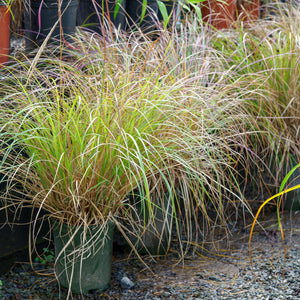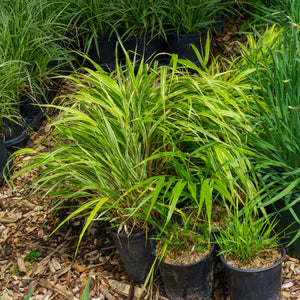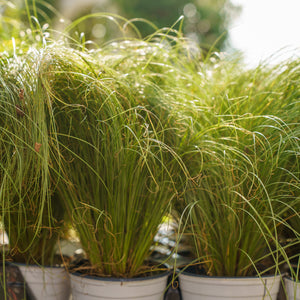The Grass Guide
Ornamental grasses add movement, texture, and year-round interest to gardens, containers, and landscapes. From arching fountain grasses to upright sedges, grasses provide a naturalistic softness that complements bolder perennials and shrubs. Whether you're designing a modern border, a woodland edge, or a drought-tolerant landscape, ornamental grasses bring beauty, structure, and ecological value.
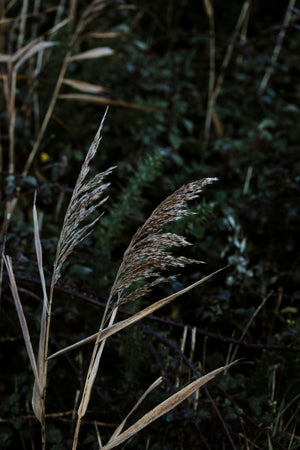
About
Ornamental grasses span a wide array of genera and species, ranging from clumping sedges and rushes to towering papyrus and finely textured fountain grasses. They are appreciated not only for their foliage but also for their inflorescences, which often persist into fall and winter, providing extended seasonal appeal.
Notable types include:
- Carex (Sedge): Evergreen or semi-evergreen in many regions, with cultivars like 'Toffee Twist', 'Amazon Mist', 'Bronco', and 'Red Rooster' adding varied color and fine texture.
- Cyperus (Umbrella Grass or Papyrus): Bold, upright, water-loving species like 'King Tut', 'Little Tut', 'Prince Tut', and 'Baby Moses' are ideal for moist soils and container displays.
- Isolepis cernua (Fiber Optic Grass): A compact rush-like plant, including 'Live Wire', that creates a weeping, hair-like appearance—ideal for containers and water gardens.
- Pennisetum glaucum (Purple Millet): Known for dramatic seed heads and deep purple foliage—excellent for annual bedding and fall accents.
- Melinis nerviglumis 'Savannah': A warm-season grass with airy pink seed heads that shimmer in the sunlight.
- Milium effusum 'Aureum': A cool-season grass prized for its bright chartreuse foliage and shade tolerance.
- Dactylis glomerata (Orchard Grass): A tough, clump-forming species that can be used in naturalistic meadows.
Ornamental grasses play a key role in biodiversity by supporting pollinators and providing shelter for wildlife, while requiring minimal inputs once established.
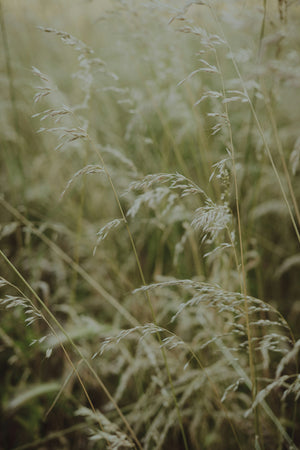
PLANTING
Ornamental grasses are adaptable, but planting at the right time and in the right location will encourage the best performance:
- USDA Hardiness Zones: Varies widely. Most carex and cyperus types are hardy in Zones 6–10, while others may be grown as annuals in colder zones.
- Soil: Most grasses prefer well-drained soil but will tolerate poor conditions. Moisture-loving types like papyrus and fiber optic grass thrive in damp or boggy locations.
- Sunlight: Full sun is preferred by most grasses. Some sedges and woodland species tolerate partial shade.
- Spacing: Varies by species. Smaller clumps like carex can be spaced 12–18 inches apart; larger grasses may need 2–3 feet.
- Planting Time: Spring and early fall are ideal for root establishment.
Water well during establishment and mulch lightly to retain moisture and suppress weeds.
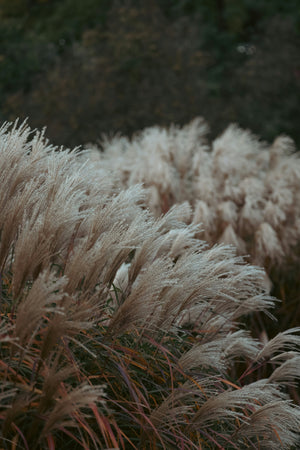
CARE
Ornamental grasses are low-maintenance, but they benefit from seasonal grooming and occasional division:
- Watering: Once established, most grasses are drought tolerant. Moisture-loving types need consistent water, especially in containers.
- Fertilizing: Typically not needed. If growth is poor, a light spring feeding with a balanced fertilizer may help.
- Pruning:
- Dividing: Divide every 3–4 years to rejuvenate growth and control spread. Early spring or fall are ideal times.
- Pests & Diseases: Rarely affected by pests or disease. Avoid overcrowding and poor drainage to prevent rot.

HOW TO USE
Ornamental grasses bring dynamic contrast and naturalistic movement to a range of landscape settings:
- Borders & Beds: Use as softening elements around bold perennials or evergreens.
- Containers: Combine grasses like carex, fiber optic grass, and purple millet with trailing and upright annuals.
- Water Gardens: Cyperus and Isolepis thrive along pond edges or in shallow aquatic containers.
- Wildlife & Pollinator Gardens: Flowering grasses provide habitat and food for birds, insects, and pollinators.
- Fall & Winter Interest: Many varieties offer structure and color long after the first frost.
Grasses pair well with echinacea, rudbeckia, sedum, agastache, and Russian sage for long-season color and texture.
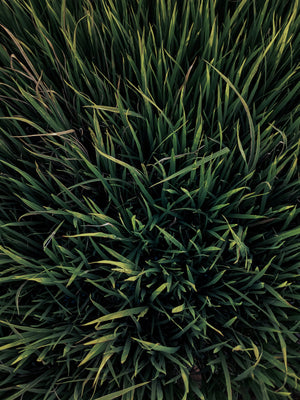
COMMON QUESTIONS
- When to cut back ornamental grasses? Late winter or early spring, just before new growth begins.
- How to trim ornamental grasses? Use shears or hedge trimmers to cut back to 4–6 inches from the ground.
- What happens if you don’t cut back ornamental grasses? Dead foliage may smother new growth and become unsightly or harbor pests.
- How to divide ornamental grasses? Dig up the clump, slice through the root mass with a spade or saw, and replant divisions.
- When to transplant ornamental grasses? Transplant in spring or early fall during cooler, moist weather.
- Do deer eat ornamental grasses? Most ornamental grasses are deer resistant, though young shoots may be nibbled.
- Are any ornamental grasses toxic to dogs? Most are non-toxic, but ingestion of large amounts can cause minor digestive upset.
- Are any ornamental grasses toxic to cats? Like with dogs, most are not considered toxic, but cats should be discouraged from chewing on ornamental plants.
Conclusion
Ornamental grasses offer unmatched texture, seasonal interest, and structure to gardens large and small. From moisture-loving cyperus to container-ready carex and bold purple millet, there's a grass for nearly every garden setting. Easy to grow and resilient in the face of drought and pests, ornamental grasses provide lasting value while supporting wildlife and enhancing visual flow in the landscape.
The Grass Collection
Sold Out
Sold Out

